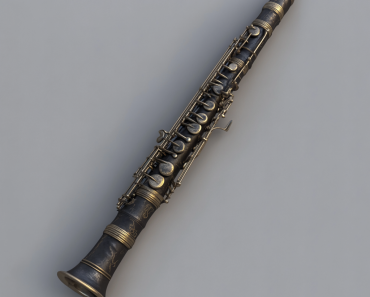Table of Contents
Why I Enjoy Playing The Clarinet
The clarinet is a fascinating instrument, capable of producing a wide range of tones and expressing a spectrum of emotions. My journey with the clarinet began with curiosity, but it quickly turned into a passion as I discovered the instrument’s versatility and depth. Playing the clarinet has been incredibly rewarding for me, and here’s why I find so much joy in it.
The Unique Sound and Range of the Clarinet
One of the things I love most about the clarinet is its unique sound. The clarinet’s tone is warm and rich, carrying a distinctive timbre that’s instantly recognizable. Unlike many instruments, the clarinet has an extensive range, from deep, mellow lows to bright, lively highs, giving it an incredible versatility. In its lowest register, or “chalumeau,” the clarinet has a full, resonant sound. As you move up through the registers, the tone shifts, becoming lighter and more expressive, with a striking brightness that adds color to any ensemble.
This range allows the clarinet to adapt to various musical settings and styles, whether it’s playing smooth and lyrical passages in classical music or energetic, syncopated rhythms in jazz. The clarinet’s sound is adaptable, making it an ideal instrument for expressing a range of musical ideas and emotions.
Expressive Qualities of the Clarinet
The clarinet is one of the most expressive instruments, capable of conveying a wide range of emotions. It can be joyful and lively, soulful and melancholic, or even hauntingly beautiful. This versatility makes it ideal for styles like jazz, where expressiveness is key, and classical, where lyrical beauty is often a focus.
Some of my favorite pieces showcase the clarinet’s ability to pull listeners into its emotional world. In Gershwin’s Rhapsody in Blue, for example, the opening clarinet glissando sets a tone that’s both playful and seductive. In Mozart’s Clarinet Concerto, the clarinet’s expressive qualities come alive in a completely different way, capturing both joy and introspective beauty. Playing pieces like these allows me to connect emotionally with the music and communicate that feeling to listeners, which is one of the most fulfilling aspects of playing the clarinet.
The Clarinet’s Role in Various Musical Settings
One of the reasons I enjoy playing the clarinet is its adaptability. It’s an instrument that fits seamlessly into many musical settings: orchestras, bands, jazz ensembles, chamber music, and even solo performances. The clarinet can blend beautifully with other instruments, supporting harmonies, or it can stand out, taking the lead with its distinct voice.
In jazz, the clarinet is lively and spontaneous, adding a bright, playful sound to ensembles. In classical orchestras, it can be both lyrical and powerful, bringing warmth and color to the woodwind section. Whether playing a solo in an orchestra, blending in with a wind quintet, or improvising in a jazz ensemble, the clarinet enriches every setting it’s part of, making it exciting to explore different musical contexts and styles.
Technical Challenges and Rewards of Playing the Clarinet
Playing the clarinet comes with its own set of technical challenges, which is part of what makes it so rewarding. The clarinet requires precise finger technique, breath control, and a well-developed embouchure to achieve a smooth, even tone across its range. Mastering these skills takes time and dedication, but it’s incredibly satisfying to feel that progression.
One of the most rewarding challenges is achieving control over the clarinet’s wide range. Each register requires a slightly different approach, and learning to move between them smoothly is a skill that comes with practice. The reed itself also presents its own quirks, which means constantly fine-tuning and adapting. Overcoming these technical hurdles makes the experience of playing even more enjoyable, as it’s a tangible reminder of personal growth on the instrument.
The Joy of Exploring a Wide Repertoire
The clarinet has a wide and varied repertoire that keeps learning fresh and exciting. From classical pieces by Mozart, Brahms, and Weber to modern jazz, folk, and even contemporary experimental works, the music available to clarinetists is incredibly diverse. This breadth allows me to keep challenging myself while discovering new facets of the instrument.
Some of my favorite pieces to play span different genres and styles, and exploring each one deepens my appreciation for the clarinet. Whether I’m working on a technically challenging concerto, a lively jazz standard, or a piece of chamber music, there’s always something new to learn. This variety makes playing the clarinet feel like a continuous journey of discovery, keeping me engaged and inspired.
Conclusion
Playing the clarinet has brought me endless joy and fulfillment. Its unique sound, expressive range, adaptability, and technical challenges all combine to create a deeply rewarding musical experience. The clarinet allows me to connect with music in a personal way, express emotion, and explore a wide range of musical settings and styles.
Whether you’re new to music or an experienced musician, the clarinet has something special to offer. For me, it’s more than an instrument—it’s a way of connecting with music and with others. I encourage anyone interested in the clarinet to give it a try and discover the unique joys it can bring to your musical journey.
Additional Reading
More blog posts can be found here. Consider following Breve Music Lessons on Facebook and listening to the Breve Music Podcast.





